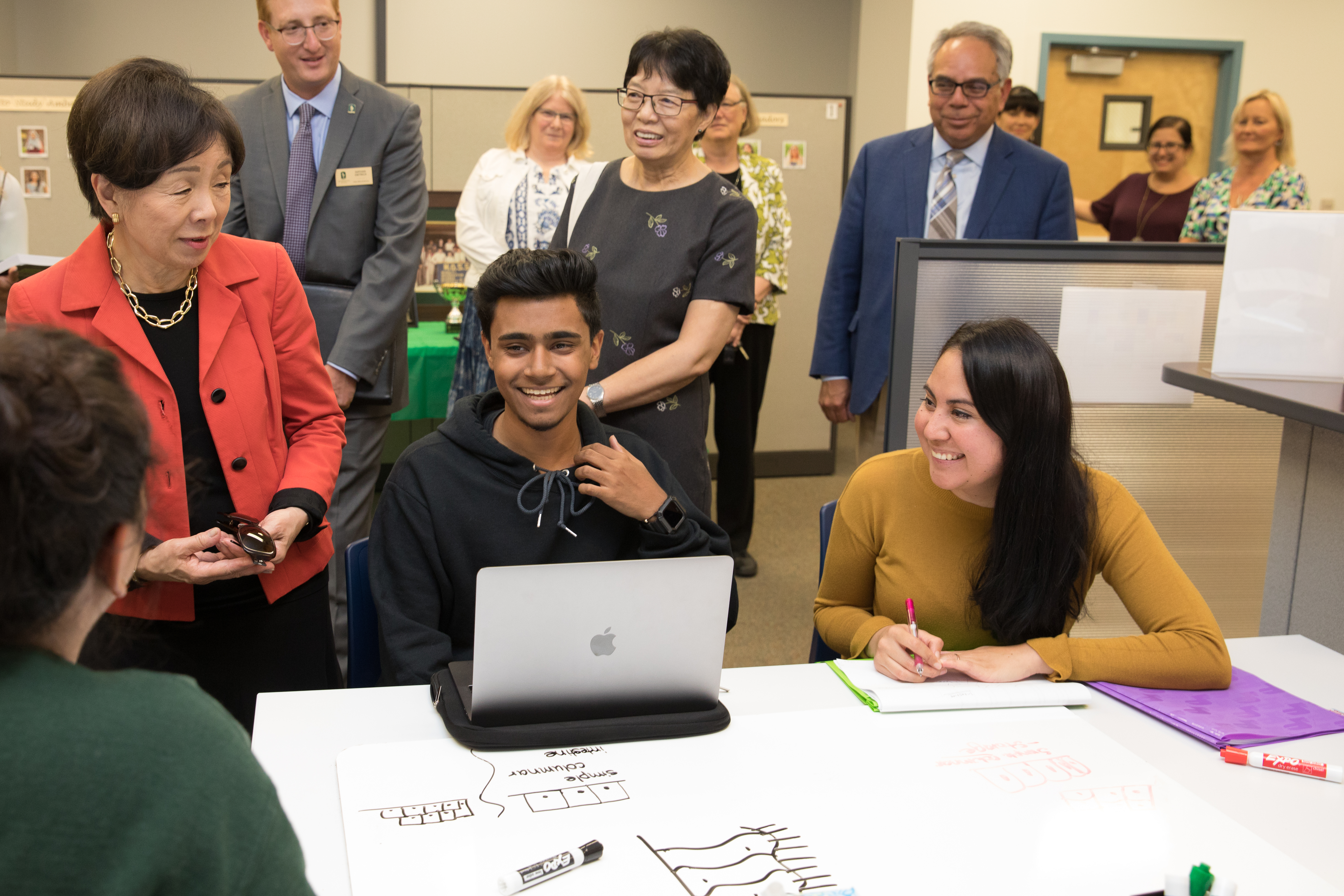 In October, Congresswoman Doris Matsui, left, visited Sacramento State to learn about Project INSPIRE and meet with student peer mentors. (Sacramento State/Andrea Price)
In October, Congresswoman Doris Matsui, left, visited Sacramento State to learn about Project INSPIRE and meet with student peer mentors. (Sacramento State/Andrea Price)Three years into Sacramento State’s first grant-funded initiative as a federally designated Hispanic Serving Institution (HSI), the University is seeing improvements in graduation rates for Hispanic, first-generation, low-income and other underrepresented college students.
Project INSPIRE – Institutional Networks for (Student) Success, (Peer) Programs and Instructional Redesign Efforts – was launched in 2015 to increase graduation rates for Hispanic and other underrepresented students and reduce “equity gaps,” which are the differences in graduation rates between those groups and the University average.
Since then, the six-year graduation rate for Hispanic students has increased from 43 percent to 53 percent. These improvements also have been seen: for all underrepresented students, 38 percent to 50 percent; for low-income students, 37 percent to 49 percent; and for first-generation students, 38 percent to 49 percent.
In all instances, equity gaps have been significantly narrowed; for Hispanic students, the gap was eliminated.
“It’s a milestone to have 25 percent or more Hispanic students enrolled at Sacramento State, but it’s a responsibility to effectively serve them and be an institution that embraces an HSI identity,” said Lynn Tashiro, director of the Center for Teaching and Learning. She and Vice President of Student Affairs Ed Mills are the co-principal investigators of the federal grant funding Project INSPIRE.
“It’s remarkable to see the progress that has been made through efforts across the campus to support these students,” Tashiro said.
Project INSPIRE is funded through a $2.4 million grant from the U.S. Department of Education. Sac State became eligible for the funding in 2013, the first year Hispanic students made up 25 percent of its enrollment. Upon being awarded the funding, the University became a federally designated Hispanic Serving Institution.
The initiative has two major components. The first is a linked network of new and existing peer programs, such as student-provided advising and mentoring, that allows the programs to better collaborate and support Hispanic, first-generation, low-income and other underrepresented students. Examples include the Peer Assisted Learning program, the Supplementary Instruction program, the Full Circle Project, and the First-Year Experience, which received support from the INSPIRE grant to staff a study and meeting space in the library. The grant also funds student salaries for 15 student peer programs.
Campus administration, faculty and staff does not reflect the student body's diversity, Tashiro said. But the peer programs provide underrepresented students with diverse student leadership and resources, helping them navigate academic and non-academic parts of the college experience.
“A student may not feel comfortable telling a faculty member or an advisor about something they are struggling with, but they will confide in a peer in a way that is very different,” she said. “A peer can also effect more change, for example, by relating to the situation and saying, ‘I was in the same situation, and here’s how it played out for me.’ ”
The second component of Project INSPIRE is the Center for Learning and Student Success Analytics, which will research the effectiveness of these peer programs and provide guidance for decision-making and future projects.
As the Department of Education grant nears its end, Tashiro is looking toward the project's future. As part of the grant, the federal government will contribute to an HSI Endowment fund and match dollar-for-dollar money the campus raises for the project, up to $275,000, for a total of $550,000. The University has begun a crowd-funding campaign in support of Project INSPIRE.
The hope, Tashiro says, is that with more than a half-million dollars in an endowment and funding from other sources, the programs that have shown promise in just a few years will be sustained.
For more information, go to the Project INSPIRE web page. – Jonathan Morales
